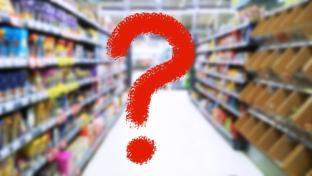Food-at-Home Inflation Still on the Rise in February

During a week when banking industry fragility is dominating the headlines and casting eyes back on the Fed and its next move on interest rates, the U.S. Bureau of Labor Statistics (BLS) dropped its latest Consumer Price Index (CPI) data. According to the BLS, overall inflation remained stubbornly on an upward direction, edging a small but meaningful 0.4% in February.
While down from the previous month’s hike of 0.5% and less steep than hikes throughout 2022, the increase underscored the ongoing high-price environment. The uptick also reflected a pricing-centric grocery industry, as the food-at-home index came in 0.3% higher last month.
[Read more: "Walmart, Target Offer Inflation-Busting Easter Deals"]
Within the food-at-home index, several categories were affected by a slight climb in inflation during the shortest month of the calendar year. Among the indexes that went up in February: nonalcoholic beverages (+1%), cereals and bakery (+0.3%), fruits and vegetables (+0.2%) and dairy and related products (+0.1%). Eggs, which had been in the spotlight for price surges, finally dipped 6.7% last month. The general meat, poultry, fish and eggs category declined 0.1% over the month, which was the first decrease in that index since December 2021, according to BLS.
On a yearly basis, the CPI for food at home was 10.2% greater than February 2022. Cereal and bakery saw the biggest price leaps during that time frame.
In comparison, the food-away-from-home CPI rose at a higher pace last month, posting a 0.6% gain that mirrored the increase in January.
Of interest to retailers that sell apparel, those goods are also above normal indexes. The CPI for apparel rose a more robust 0.8% in February after the same gain in January. Those are the highest rates in that sector within the last eight months.
The fact that the CPI is still in positive territory would normally mean that the Fed would take a look at increasing interest rates to further cool down the pricing environment. This is not a normal week, however, as one Wall Street leader noted. “We would be surprised if, just one week after going to great lengths to support financial stability, policymakers risked undermining their efforts by raising interest rates again,” wrote Jan Hatzius, chief economist at Goldman Sachs, in a note to that firm’s clients, shared with the Associated Press.







